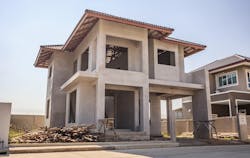The Pros and Cons of Buying New Construction
About one-third of all homes in the for-sale market are newly built, and despite skyrocketing prices leaving a growing share of house hunters without affordable options, new construction could offer some benefits, according to Realtor.com. Not only are new homes customizable, but they also rarely need repairs or renovations, meaning that maintenance costs will be far lower. In addition, home builders often help buy down the mortgage rate and offer extended rate locks for new homes, offering budget-conscious buyers a hedge against rising interest rates.
Still, as builders confront a series of supply chain hurdles and labor shortages, new homes can take upwards of 6 months to complete from start to finish, and they usually come with a heftier price tag than pre-existing homes.
“With a new-construction home, everything is updated and in good working order, so there is no need to allocate additional money above and beyond the purchase price once you’ve moved in,” says Jesse Little, senior director of advice for Wells Fargo Wealth & Investment Management. “With a pre-owned home, there could be hidden defects that are not discovered until after the purchase.”
All of the above advantages of new construction usually come with a heftier price tag.
According to the U.S. Census Bureau, the median price for a new single-family home is currently $436,800. In comparison, the National Association of Realtors found that the most recent median sales price for a pre-owned home is $384,800.
